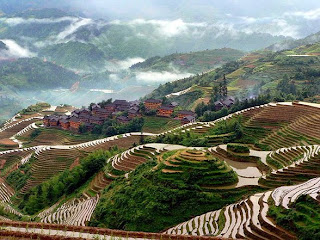
Efforts to protect Tibet’s environment have achieved satisfactory economic and social results. Beginning in the 1980s,Tibet began to enact rules and regulations for the protection of the eco-environment, treatment of pollution, and control of pollution at source.
At present, the region is making efforts to revise the regulations for Environmental protection to guarantee healthy economic development. In 2001 and 2002 efforts were made on four occasions to examine the execution of the environmental protection law. This guaranteed the implementation of the relevant rules and regulations.
The people’s government of the Tibet Autonomous region sets great store by protection of eco-environment. It endorsed the plan for Development of Nature Reserves in Tibet in 1998, The plan for construction of the eco- environment in 1999, and views on the implementation of the PRC Program for National Protection of the Eco-environment in 2001.
Environment protection has found it’s way into the PRC program for development of Western regions and the 10th five-year plan (2001-5)-:
Undertaking treatment of sands on the middle reaches of the Yarlung Zangho River and protection of natural forests in three countries on the river’s upper reaches. Thus far, the first-and-second-phase treatment of sands in Shiquanhe River of Ngari has been completed , and the project to plant trees and grass is completed.During the ninth five-year plan, 13,600 hectares of land were planted with trees and 62,000 hectares of land with grasses.
By the year 2000, the central Government had invested 994 million Yuan in the comprehensive agricultural development. Social and environmental results, were achieved through efforts to transform soil, build water works and plant trees and grasses.
Treatment of pollution-:
Alongside with fast economic development, Tibet faces possible environmental pollution . Efforts, therefore, have been made to treat polluted land , firstly, by controlling the supply of pollutants at the source. Technological transformation projects were programmed and 75 percent of new project were undertaken alongside with strengthened efforts to install pollution-free facilities. Secondly, the local government enacted a law in 1999 to demand 15 major important industrial enterprises in the region, who contribute more than 85 percent of pollution, should clean up their act.
Also, with view to protecting the health of the urban population, various cities and towns in the region are coupling formulation of their urban development plans with efforts to treat pollution. Sewage drainage and water supply networks were built. In 2002, a garbage burial ground was completed to handle household waste. In the same year, 1,693 hectares of grasses and trees were planted in Lhasa and Xigaze. In Lhasa, more households now cook with gas.
All these contribute to better quality of the air and a good environment.
0 comments:
Post a Comment